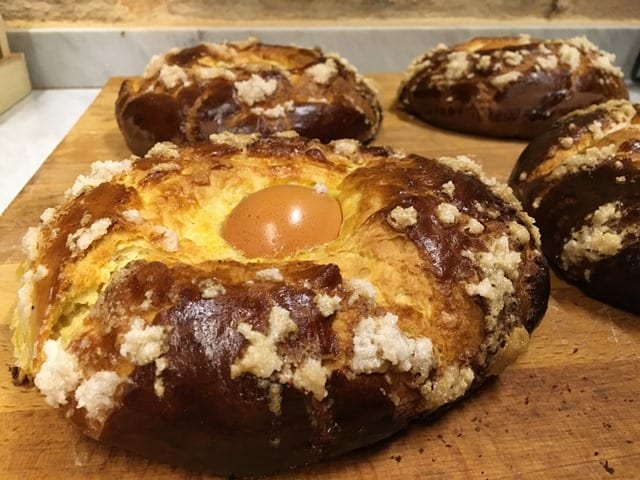Nougat, polvorones, marzipan and, of course, roscones now that the King's Night. We face this last week of Christmas in which you can still continue enjoying all kinds of Spanish Christmas sweets. Now, although many have crossed the borders of their original place of origin and have spread in their production as well as in their consumption to other regions, we are going to present you some very special ones. Because among all the delicacies of this time, the fruit of traditional recipes that have remained in Spain to this day, we are going to focus on some autochthonous, own of a specific area and with shapes originals.
Varieties in abundance
All the Christmas They are to be enjoyed especially with the family but also delighting your palate by taking some gourmet products such as sweets and cakes. Those of which there are infinity as you go through towns and cities throughout the country. You can really find that of a product there are quantity of varieties in abundance according to the areas where it is made.

It is usually similar or reasonably similar in visual aspect but different in terms of certain ingredients used or home made recepies looking to give it a personal touch. Even the same sweet can receive different name with which it is popularly known in a specific place within one or specific autonomous communities.
However, some Spanish Christmas sweets are so authentic that on rare occasions you will find them in other areas far from that of origin. Here we reveal some pastry delicacies very typical of a region and without those typical replicas or imitations.
Goxua, the Vitorian cake
Typical of the Basque Country but more specifically from the province of alava with its capital as the main exponent of this Vitoria cake. The Goxua It was created in the 70s by a pastry chef-López Sosoaga- who was even surprised with its new elaboration. It is made up of a mixture of pastry cream, sponge cake, whipped cream and liquid caramel in its original recipe.
What does it mean Goxua? Well, "sweet" in Basque, so it doesn't have much mystery but it does have a spectacularly sweetening flavor. We invite you to taste it and we recommend you also try the nougat de intxaursalsa or this cream alone. It is another very typical preparation that means walnut sauce because this dried fruit is the star ingredient along with cinnamon, milk and sugar.
See this post on Instagram
Asturian Casadielles
We do not travel very far from Euskadi to enter Asturian lands and know the casadielles. They are some dumplings but elongated stuffed with a mass of walnut, sugar and anise. After frying them, they are ready to fill you with energy, as this bite is forceful. They can also be baked with dough puff pastry.
Discovering its origin is traveling to Roman empire, as some point out, or refer to the term of Asturias "Cosadielles". It comes to mean "what is it?" as a riddle. There is debate with this but the first theory gains more weight because in Sicily there are very similar sweets.
See this post on Instagram
Fardelejos Rioja
Typical of the Riojan town of Arnedo, this product among the Spanish Christmas sweets most unique is of Arab origin. It is also like a dumpling but rectangular which is made with a puff pastry filled with dough almond, sugar and egg. In other words, a smoother marzipan paste.
Galician stamp cake
One of those unmistakable Spanish Christmas sweets and with its own mandatory stamp is the Santiago de Compostela cake. A cake that you can find along the entire famous road but that at Christmas gains relevance. Because in this very religious age it is also valued thanks to its most visual characteristic: the cross silhouette Santiago drawn with sugar glass.
Its structure is achieved without any flour (something perhaps shocking in pastry). It only has an almond, sugar and egg dough to which you can add a touch of lemon or cinnamon for added flavor. Its real origin is unknown.
See this post on Instagram
Island almond cheese
In the island of La Palma (Canary Islands) A very native and curious sweet is also made. At least in its shape that is reminiscent of a flan or a kind of cupcake decorated in your glass. Your name -almond cheese- It is equally surprising because in no case does it contain any of the dairy derivative mentioned. It is obtained with the most popular dried fruit of all Christmas pastries, sugar, egg yolks, lemon and cinnamon.
Sweet potato Pastissets
La potato It is another star ingredient in the Christmas candy store. In this specific case, the Pastissets They are typical dumplings of Valencia stuffed with sweet potato that gives it all the flavor. Of Arab origin, this is a very different dessert from the common nuts. The Cadiz bread It is a cake-shaped dessert that also uses sweet potato.
In short, these are some of the Spanish Christmas sweets most unique that you can enjoy these days every year. If you find yourself passing through any of the regions where they are so indigenous, we encourage you to taste them.






